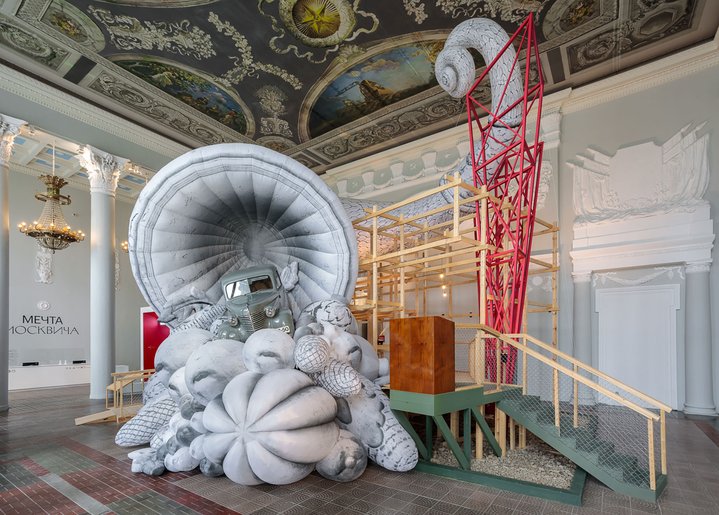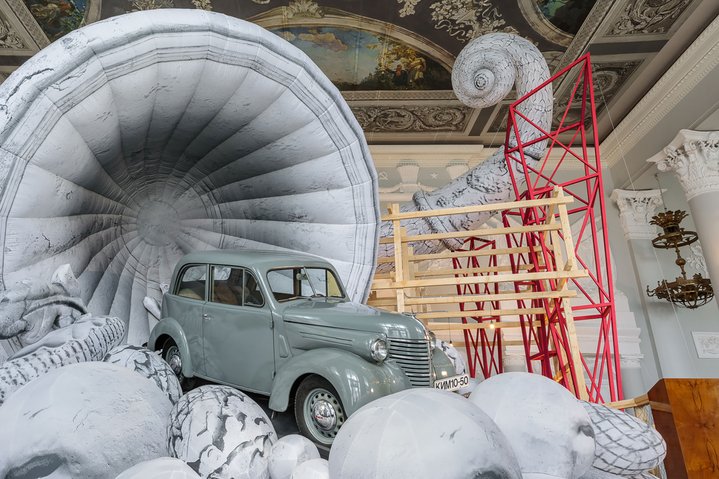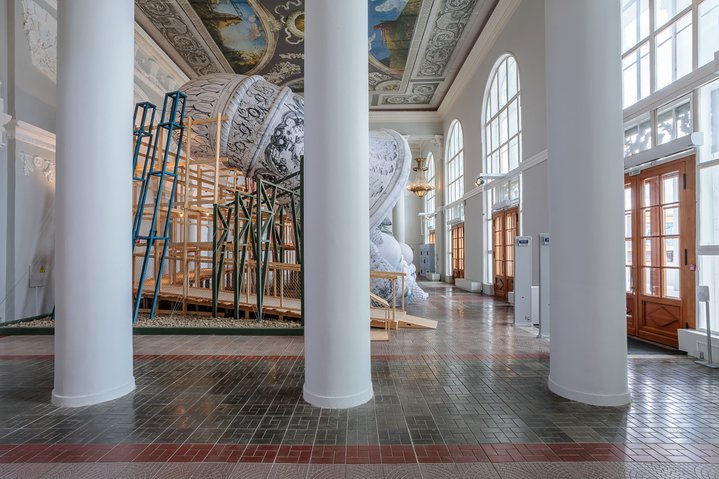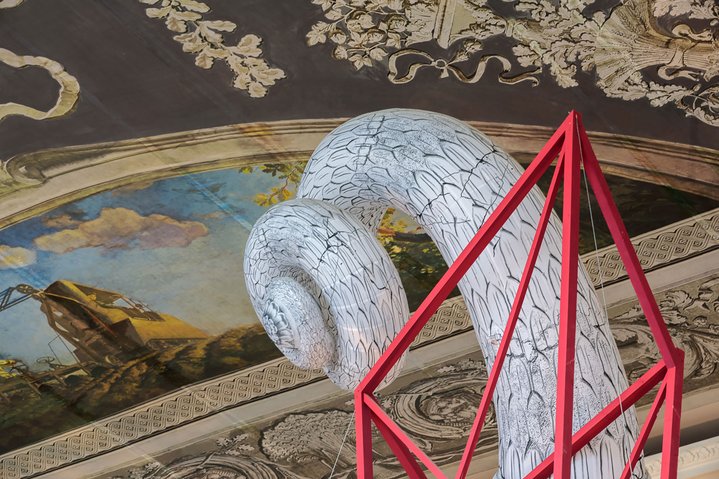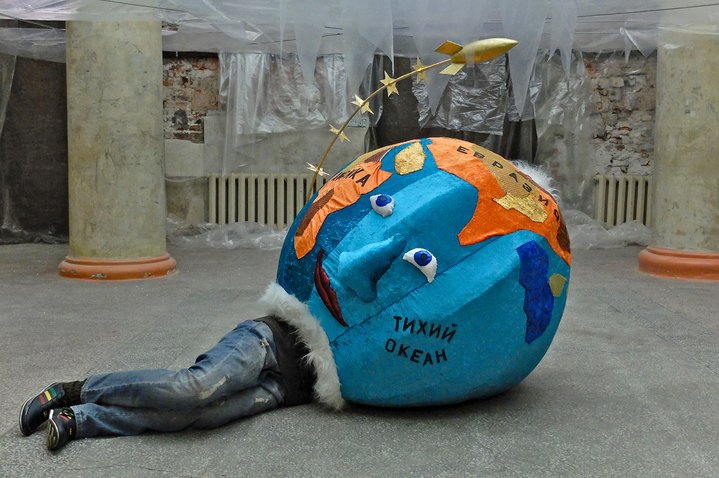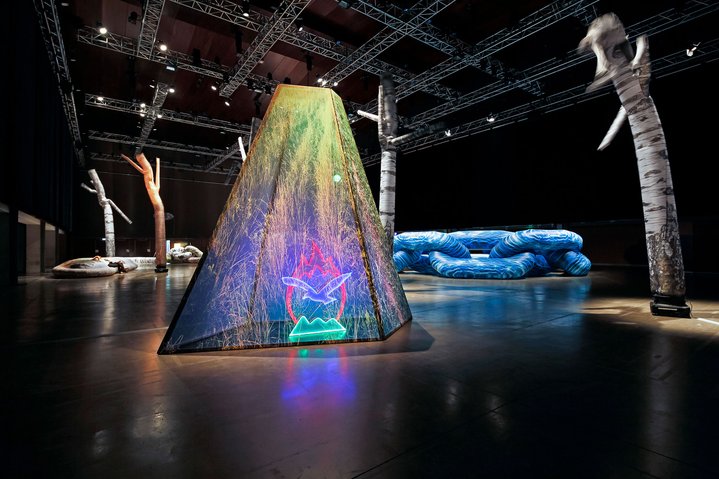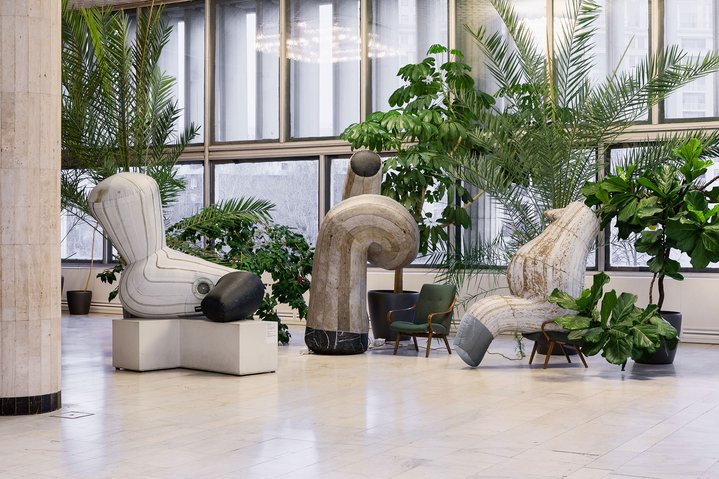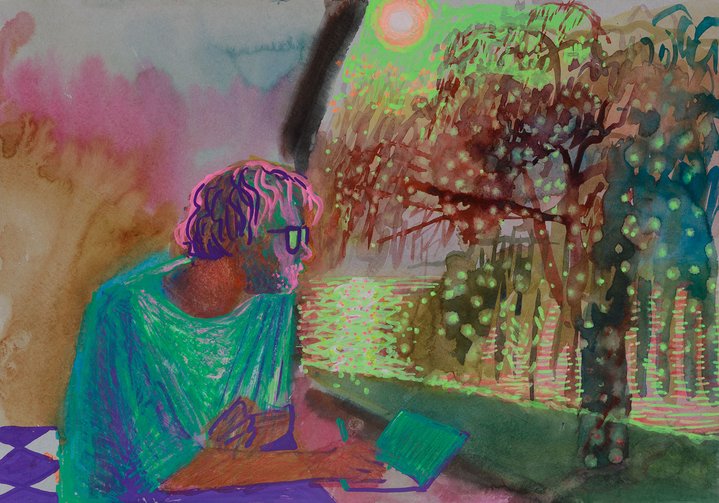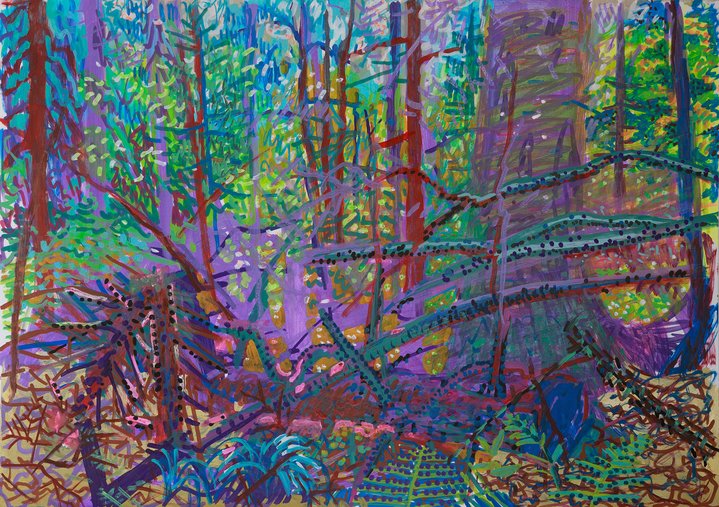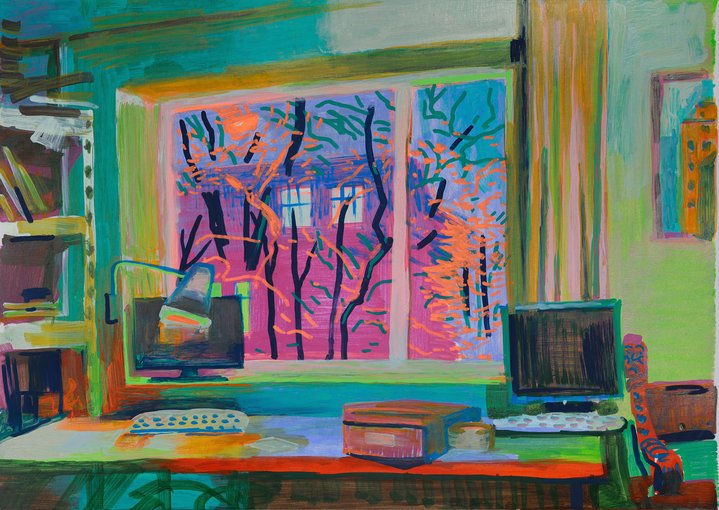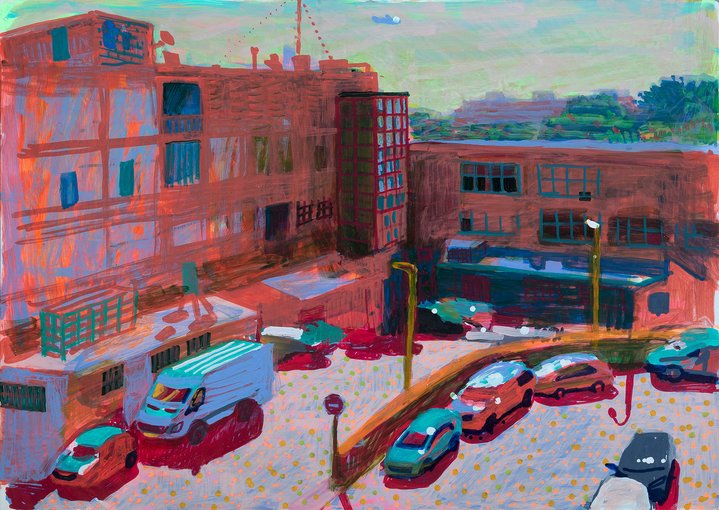In the guise of a portrait — Irina Korina

Large-scale installations by Russian artist Irina Korina have been shown at exhibitions and biennales from Miami to Venice. This summer, she has unveiled recent works at the Diversity United exhibition in Berlin and at Moscow’s new Museum of Transport and is about to exhibit a new project at Cosmoscow, where she was selected as ‘Artist of the Year’.
Irina Korina (b. 1977) is a nightmare for a museum conservator and a dream-come-true for a chief curator. Unquestionably, the multi-part large-scale installations, that have made her one of the most renowned Russian contemporary art artists in the past decade, both in Russia and abroad, are extremely problematic to store and not easy to reassemble. However, her installations are impossible to walk past without stopping for a closer look. They are vibrant interplays of form and content that offer viewers and art critics personal confrontations based on a lucid analysis of the world we live in, less with the intimate personal biographical world of the artist as in the Kabakovian tradition. Intimacy here is a question of getting a firm grasp of the reality surrounding us. Indisputably, these works possess a domestic feel one can easily relate to, as well as a surrealist quality that gives them a dream-like atmosphere in which it’s nice to lose oneself. Korina’s installations as constantly surprising for her choice of materials: oil cloth, linoleum, laminated cotton, wall panels, printed cellophane, aluminium foil, as if coming straight from a DIY store (as well as a wide range of artificial flowers and safety vests). To better understand Korina’s installations you need to look at the soil from which these works grow: contemporary Russia and its recent Soviet past. Her works are direct quotes drawn from historical facts and personalities, as well as glimpses of the life that characterizes Russia today. For Korina, the metaphor of an artist as a bird belonging to a borderless sky is not realistic. Perhaps, she sees herself more as a tree whose roots stretch deep into the ground from which it has sprung? There is her walking fluffy head of Lev Tolstoy dressed up as if handing out advertising flyers or her mosaic of Yuri Gagarin wearing a USSR era helmet half hidden behind a high fence: both possess a richer ironic gloss when seen from inside the culture to which they belong.
Similarly, her recent installation ‘Horn of Plenty’ at the Museum of Transport of Moscow housed at the VDNKh (All-Russia Exhibition Centre) is based on Soviet history. In this work, Korina adopted the perspective of a scriptwriter and stage designer who are telling the plot of a drama to be staged in a theatre. The central part of the narrative was about the so-called ‘KIM-10’, a small cheap car designed for mass production at the end of the 1930s and known as one of the “most unfortunate automobiles in Soviet history”, as it did not meet the approval of the Sovnarkom (Council of People’s Commissars). In the installation, one of the few surviving cars today stands on inflatable cornucopias that are reproductions of stucco works adorning the facades of the buildings forming the pompous architectural ensemble of the VDNKh. They look like gifts from heaven, but they are full of air, just like the VDNKh itself, literally “Exhibition of Achievements of National Economy”, also a project of the 1930s, a state project very similar in scope to what Socialist Realism was for the arts, an illusion of splendour, prosperity and wellness; a dream factory very similar to that of a cinema studio.
For Korina, the theatre can be considered her second home after the exhibition spaces of a contemporary artist. In 2000, she graduated as a stage set designer from the Russian Academy of Theatre Arts in Moscow and since then, she has been taking part in several stage productions. Perhaps, such projects that are not related to contemporary art exhibitions have allowed her to overcome the downs artists go through in their careers, like that melancholy that strikes the day following an exhibition opening, once the adrenaline shot that made the artist run an extra mile is fully over. According to Korina, diversity in practice might also help young artists who struggle to make ends meet and are ready to quit when things do not turn out the way they hoped. If you want to carry on making good art throughout dips and troughs, one secret is the feeling that you are constantly part of a bigger creative process. As Korina says, an artist can work like a professional chef: they cook different dishes at the same time, each with its own level of readiness.
Running alongside her cinematic and theatre projects, Korina’s most effective exercises to feed into her creative continuum are drawings, which now occupy a big part of her working day. She has reversed the canonical path from small scale to large scale work – from drawings to total installations – the otherwise staple chronology of a contemporary artist’s career. She started out with large scale installations whilst the past few years have seen her drawings increasingly taking central stage of many exhibitions. For Korina, drawing is a different way of thinking, a pause from making installations which she felt she needed. When you draw, she explains, you have to stop planning, an indispensable skill with installations given that making an installation requires keen focus on many small details, from where to source the right materials, to finding the right people for assembling all its parts together. Drawing, on the other hand, means focusing for a few solitary hours just on the marks you are leaving on a sheet of paper, without thinking about the future. It is a process in which the mind becomes the body, because, at the end of the day, it is your body doing everything. Felt pens and markers are Korina’s preferable medium, because they are easy to carry around and mean she can draw in all sorts of places and conditions. Her practice here is almost like that of a photographer: the surreal patchworks of her installations give way to what is in front of her own eyes. Real people and real places – with Irina Korina’s own signature style.
Diversity United
Berlin, Germany
June 9 – September 19, 2021
Muscovite’s Dream
Moscow, Russia
Cosmoscow. 9th International Contemporary Art Fair
Moscow, Russia
September 10–12, 2021






